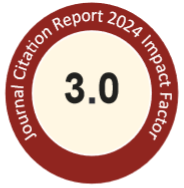Abstract
The electrochemical oxidation behavior of hydrochlorothiazide (HCT) on a glassy carbon as a working electrode was investigated in Britton-Robinson (B-R) buffer pH 3, by using anodic stripping voltammetry (ASV) and cyclic voltammetry (CV). This drug gave a well-defined voltammetric oxidation peak at + 1200 mV versus an Ag/AgCl reference electrode. The electrochemical oxidation process was shown to be irreversible and diffusion controlled, with adsorption characterized over the entire pH range. The optimized conditions, such as accumulation time and potential, scan rate, frequency, pulse amplitude, varying of working electrodes, and instrumental parameters were studied. The calibration graph for HCT was obtained from 4 × 10-6 to 4 × 10 -5 M (correlation coefficient = 0.997) using the developed electroanalytical method (ASV). The detection limit of this drug was 4.3 × 10-9 M. ASV and CV techniques with adequate precision and accuracy have been developed and applied for direct determination of HCT in commercial tablets without separation or extraction procedures and biological fluids such as urine and plasma. © 2014, Food and Drug Administration, Taiwan.
ScienceDirect Link
Recommended Citation
Alghamdi, A.F.
(2014)
"Electrochemical oxidation behavior of hydrochlorothiazide on a glassy carbon electrode and its voltammetric determination in pharmaceutical formulations and biological fluids,"
Journal of Food and Drug Analysis: Vol. 22
:
Iss.
3
, Article 12.
Available at: https://doi.org/10.1016/j.jfda.2013.12.003
Creative Commons License

This work is licensed under a Creative Commons Attribution-Noncommercial-No Derivative Works 4.0 License.
Fulltext URL
https://www.sciencedirect.com/science/article/pii/S1021949814000283/pdfft?md5=85fa6a2c0ffc314a5e3a97fab36781b6&pid=1-s2.0-S1021949814000283-main.pdf
Included in
Food Science Commons, Medicinal Chemistry and Pharmaceutics Commons, Pharmacology Commons, Toxicology Commons

